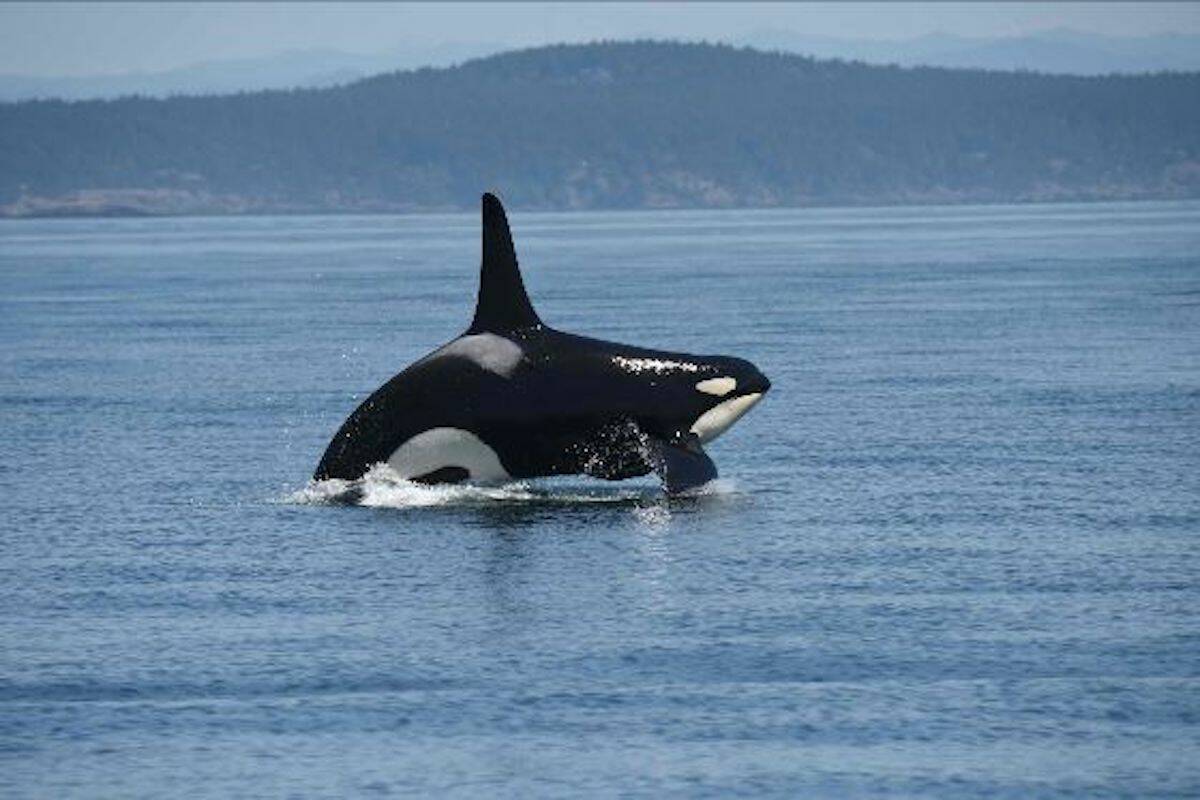B.C.’s southern resident killer whale population isn’t getting enough to eat and hasn’t since 2018.
Greedy sea lions and a reduced buffet of salmon have contributed to the troubling situation for the Salish Sea’s signature species, according to a study released today by the University of British Columbia.
According to their research, the species has been in an energy deficit, averaged across spring, summer and fall, for six of the last 40 years. This means they are not eating enough to support their mobile activity. More importantly, three of those six years came in the most recent years of the study, 2018 to 2020.
Senior author Dr. Carl Walters said commercial fisheries for chinook salmon in Canada were reduced in the late 1990s following observations of declining abundance. But the declines have continued, likely due to a massive increase in the Steller sea lion population since the mid-1980s.
“Those sea lions now consume more fish than all the B.C. commercial fisheries for all species, combined.”
The salmon-eating southern resident population currently comprises 73 individuals resulting in it being listed as ‘endangered’ under the Species at Risk Act in Canada.
According to study co-author Dr. Christensen, the dire situation may call for a call to action including a potential reduction in the catch of larger chinook salmon or promoting fishing techniques that increase the survival of larger fish and more.
“The years where southern residents were in an energy deficit are also years where other studies report lower population growth rate and higher mortality rates for the killer whales,” said Christensen.
The average difference in energy is about 17 per cent of the daily required energy for an average adult killer whale, researchers said.
The study analyzed how changes in the abundance, age and size of chinook, coho and chum populations influenced the daily food consumption of the killer whales, from 1970 to 2020, in the Salish Sea and the west coast of Vancouver Island.
Previous research has shown correlations between chinook salmon abundance and southern resident survival rate and fertility. The decline in chinook salmon abundance could be attributed to many factors, said lead author Fanny Couture, including the effects of climate change, greater susceptibility to disease and predation by other animals.
“With the southern resident population at such a low level, there’s a sense of urgency to this kind of research,” said Couture. “Both killer whales and chinook salmon, the southern resident’s main prey, are important, iconic species for the west coast of Canada.
Studying what is happening to the population may help offer solutions, both for the southern residents and potentially other killer whale populations in the future.”
RELATED: J-pod’s newest member is a girl
RELATED: Southern resident killer whale grandma, 47, missing and likely dead: researchers

